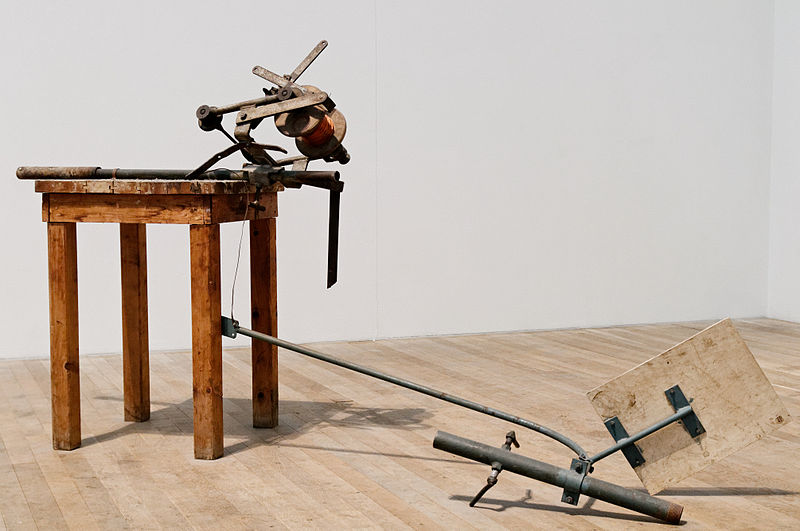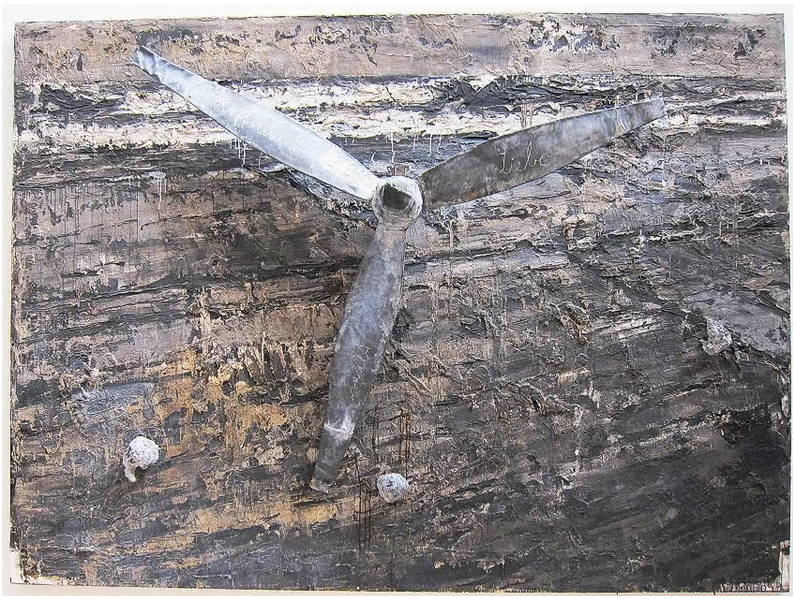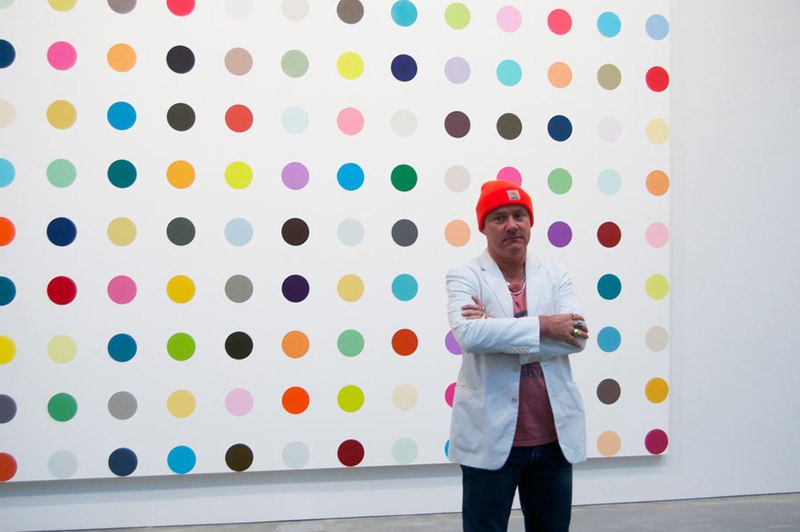Welcome! You’re about to explore the most influential artists in current art movements, from Minimalism to Fluxus and beyond.
You’ll meet artists like Wolfgang Tillmans and Olafur Eliasson, who’ve significantly impacted Contemporary Art.
We’ll dive into the enthralling world of Luc Tuymans and Shirin Neshat, whose works have shaped Modern Art.
You’ll discover how these artists push boundaries, challenge societal norms, and use unique mediums and themes to express their artistic visions.
Their creativity, innovation, and influence continue to redefine the art world, and it’s high time we appreciate their contributions.
So, get ready to expand your artistic horizons and learn about the trailblazers of today’s art scene.
You’re in for a treat!
Contemporary Art
You’re living in an exciting time where contemporary art, brimming with diverse styles and groundbreaking concepts, actively shapes our culture. Just think of artists like Anselm Kiefer, JR, and Hito Steyerl pushing the boundaries and making us question our place in the world.
These artists, along with others like Njideka Akunyili Crosby, Mark Bradford, Wolfgang Tillmans, and Olafur Eliasson, are using their work to explore themes of technology, identity politics, globalization, and the human body. Their art is rich, thought-provoking, and often challenges conventional notions of what art can be.
Whether through performance art, street art, or more traditional mediums, they’re creating pieces that resonate with viewers and reflect the complexities of our time.
Minimalism
Imagine a world stripped of unnecessary elements, where art is distilled to its simplest form – that’s the beauty of minimalism. This style, born in the late 1950s, is all about simplicity, purity, and precision.
Minimalist artists like Donald Judd, Agnes Martin, and Dan Flavin have influenced this movement greatly, creating works that challenge our perception of space and materials. Judd’s geometric sculptures, Martin’s serene grid paintings, and Flavin’s installations using commercial fluorescent lights are prime examples.
Minimalism isn’t about the absence of design, but the essence of it. It’s about achieving more with less, letting the viewer experience the art without any distractions. It’s a powerful reminder that in art, just like in life, less can be more.
Conceptual Art

Programmed Machines installation by Maurizio Bolognini / GNU Free Documentation License / Via Wikimedia Commons
Consider this: instead of paint and brushes, the canvas of a conceptual artist is the mind itself, where ideas and concepts take precedence over physical forms.
Conceptual art challenges traditional notions of art and how it’s made, focusing more on the idea behind the work than the final product.
Influential artists like Damien Hirst and Ai Weiwei have used this approach to push boundaries and provoke thought. Hirst’s controversial works with dead animals and Weiwei’s politically charged installations are unforgettable examples.
Whether it’s Hirst’s shark in formaldehyde or Weiwei’s sunflower seeds installation, the aim is to disrupt your usual thinking. It’s not about liking what you see but engaging your mind, challenging your opinions, and encouraging dialogue.
That’s the true power of conceptual art.
Photorealism
American photorealist painter John Baeder
Feast your eyes on a photorealistic painting, and you’ll be amazed at how artists have mastered the craft of replicating life with such intricate detail and precision—it’s as if you’re looking at a photograph.
Emerging in the 70s, photorealism is a movement that demands technical skill and patience. Artists like Richard Estes, Chuck Close, and Audrey Flack have led the way, creating pieces that capture skin texture, the reflection of glass, and the play of light with uncanny accuracy. They use photographs as their source, painstakingly building up layers of paint to mimic every minutiae.
It’s not just about duplicating a photo but exploring the relationship between reality and illusion. Art, in this case, is a mirror held up to nature.
Fluxus

Monument to the Stag (c. 1958 – 1989) by Joseph Beuysa; © Marie-Lan Nguyen / Wikimedia Commons
Breaking the norm, Fluxus emerged in the 70s as an experimental art movement that dared to challenge the traditional commercial art world, focusing instead on the beauty of experience and interaction.
As a Fluxus enthusiast, you may already know that it’s not about the finished piece but the process and the concept behind it.
Pioneers like George Maciunas and Yoko Ono pushed boundaries, blurring the line between art and life.
Fluxus’s works often involve the audience, making you a part of the art itself.
Whether it’s performance art, music, or visual pieces, Fluxus invites you to interact and question your idea of art.
So, dive into this exciting realm where art is action, and experience is everything.
Land Art/Earth Art

Spiral Jetty (1970) by Robert Smithson; Netherzone, CC BY-SA 4.0, via Wikimedia Commons
Imagine stepping into a vast landscape where the earth has been sculpted into a breathtaking masterpiece. That’s the essence of Land Art/Earth Art. This art movement was born in the 1970s and takes art out of the gallery and into the natural environment. Artists like Richard Long and Nancy Holt have played pivotal roles in shaping this movement. Richard Long uses natural materials to create his works, while Nancy Holt is best known for her large-scale environmental sculptures. Their works aren’t just about creating beauty; they’re about exploring our relationship with the world around us. By crafting art directly from nature, they invite us to see the earth in a new light.
So, next time you’re out exploring, remember you might stumble upon a piece of Land Art.
The Pictures Generation
Emerging in the late 1970s and early 1980s, The Pictures Generation was an art movement that fundamentally challenged the dominance of photography and digital imagery in mass media and advertising.
This movement was led by artists who responded to the pervasive media culture with a critical lens. Key figures like Cindy Sherman and Robert Longo used appropriation and montage techniques to question the authenticity and manipulation of images.
They presented familiar images in unfamiliar ways, forcing the viewer to reconsider their understanding of visual culture. Their work continues to influence contemporary art, reminding us of the power of images in shaping our perceptions and identities.
So next time you see an artwork questioning the truth of an image, remember, The Pictures Generation might inspire it.
Neo-Expressionism

Glaube, Hoffnung, Liebe by Anselm Kieffer, located in the Art Gallery of New South Wales; Wmpearl, CC0, via Wikimedia Commons
The raw, expressive power of Neo-Expressionism would likely take you aback. This bold art movement surged in the 1980s, challenging Minimalism and Conceptual Art’s sterile, intellectual rigidity.
Neo-Expressionists injected messy, painterly elements and references to the real world, creating art that hits you right in the gut. Think of artists like Julian Schnabel, whose plate paintings are a testament to the movement’s tactile sensibilities. Jean-Michel Basquiat combined graffiti, text, and vibrant imagery to explore race, class, and cultural issues.
So, take a moment to delve into this movement. It’s more than just a visual feast – it’s a visceral exploration of human experience.
Text Art

Dive into Text Art, where words leap off the page and take center stage, transforming from mere letters into powerful symbols and captivating visual forms.
This unique style, born from the intersection of literature and visual arts, allows artists to explore communication, language, and interpretation themes.
One prominent artist in this field is Jenny Holzer, whose work often incorporates provocative statements, often displayed in public spaces. Her ‘Truisms’ series is a compelling example, featuring bold, thought-provoking aphorisms that challenge societal norms and provoke dialogue.
Similarly, Barbara Kruger uses text to critique consumerism, power dynamics, and identity. Her iconic work, ‘I Shop Therefore I Am,’ encapsulates the essence of Text Art, using words as the primary medium to convey powerful messages.
These artists and others continue pushing Text Art’s boundaries, transforming language into an evocative visual experience.
The Young British Artists (YBAs)

Damien hirst / by Andrew Russeth / Via Wikimedia Commons
If you’re seeking to stir up your understanding of contemporary art trends, let’s delve into the bold and rebellious world of The Young British Artists (YBAs).
Formed in the 1990s, this group of artists, who graduated from Goldsmiths’ College, London, riveted the art world with their shock tactics and attention-grabbing antics. They challenged traditional artistic norms, focusing on the concept rather than the process.
Their leaders, Damien Hirst and Tracey Emin, are iconic figures in contemporary art. Hirst’s controversial works often involve dead animals preserved in formaldehyde, while Emin’s provocative pieces explore themes of sexuality and identity. These trendsetters have significantly influenced the outlook of present-day art, affirming the YBAs’ lasting impact on the global art scene.
Contemporary Artists
Anselm Kiefer
Anselm Kiefer’s work is a profound exploration of history and culture. He often delves into themes of mythology, philosophy, and the human condition. Through his large-scale paintings and sculptures, he challenges you to confront the past and grapple with complex and often painful historical events. His materials, such as lead, straw, ash, and even dirt, add a tactile depth to his work, enhancing the raw and emotive qualities. You can’t ignore his stark depictions of post-war landscapes and the ruins of industrial sites. They serve as stark reminders of the consequences of human actions. Kiefer’s impactful work has earned him a prominent place in contemporary art, resonating with audiences worldwide. The depth of thought and emotion in his work truly sets him apart.
JR
You’ve likely seen JR’s impactful street art, often towering over cityscapes, that challenges societal norms and sparks meaningful conversations about identity and belonging.
This French artist, known only by his initials JR, uses the world as his canvas, creating large-scale photographic murals in public spaces. His work is a blend of art and action, politics and people.
One of his most notable projects, ‘Women are Heroes,’ portrays women from different parts of the world on a gigantic scale, showcasing their strength and resilience.
By placing his art in public spaces, JR forces us to confront social issues head-on. His work not only transcends borders but it also provokes thoughts and encourages dialogue, making him an influential figure in the contemporary art movement.
Hito Steyerl
Hito Steyerl’s work is a sight to behold; this German filmmaker and artist creates thought-provoking multimedia installations that critically engage with digital technology, surveillance, and the global circulation of images.
Steyerl’s work is a commentary on our modern world, where information is disseminated at lightning speed, and everything is under scrutiny. Her installations often blend film, digital graphics, and soundscapes to create immersive experiences that challenge our perceptions of reality.
She’s not just an artist but a critical theorist who uses her art to question the socio-political dynamics of the digital age. If you’re interested in contemporary art that pushes boundaries and makes you think, you’ll find Steyerl’s work enlightening and deeply engaging. She’s truly a creative force in today’s art scene.
Njideka Akunyili Crosby
Njideka Akunyili Crosby’s captivating works are a visual treat that masterfully blends the personal and political, echoing her multicultural experiences. Born in Nigeria and based in Los Angeles, Crosby’s art is a vibrant fusion of Western and African cultures.
Her large-scale compositions are layered with paint, fabric, and photo transfers, creating an intricate collage that tells a nuanced story. Her works explore identity, love, and post-colonialism, often featuring intimate scenes of domestic life.
As you delve into her art, you’ll discover a powerful commentary on the complexities of navigating two cultures. Crosby’s unique style earned her a MacArthur ‘Genius’ Grant and significantly influenced the contemporary art scene.
Mark Bradford
Mark Bradford’s remarkable works, deeply rooted in his personal experiences and social issues, are truly a sight to behold. Born in Los Angeles, Bradford’s art reflects his experiences growing up in a marginalized community. His abstract collages, often made from found materials, are masterpieces in their own right, each telling a story of struggle and resilience.
You’ll find that Bradford’s works are heavily influenced by the Minimalism and Conceptual Art movements, with their complex layering and thought-provoking themes. His unique style has made him one of the most significant artists in contemporary art today.
Whether you’re a seasoned art connoisseur or a casual observer, Bradford’s work will captivate your interest and stir deep thought.
Wolfgang Tillmans
Transitioning from Mark Bradford, another influential figure in contemporary art is Wolfgang Tillmans. You might know him as a German photographer whose work revolutionized the field of photography. His candid snaps capture the raw essence of everyday life, blurring the lines between the mundane and the extraordinary.
His work invites you to see the world differently, sparking curiosity and questioning societal norms. Tillmans isn’t confined to photography; he’s also ventured into video installations and music.
He’s known for his activism in LGBTQ+ rights and European unity. His ability to push boundaries and his commitment to social issues make him a standout figure in contemporary art, undeniably making a lasting impact.
Olafur Eliasson
You’ve likely experienced Olafur Eliasson’s work, even if you didn’t realize it then. Eliasson, a contemporary artist, is known for his large-scale installations that engage viewers through the elements of light, water, and temperature, creating immersive experiences that challenge perceptions of space and reality.
He’s the mastermind behind the awe-inspiring ‘The Weather Project’ at the Tate Modern, where he transformed the Turbine Hall into a spectacular sunlit, misty atmosphere.
Eliasson’s art isn’t just confined to galleries, though. You might have seen ‘Ice Watch,’ where he placed melting icebergs in public spaces to highlight the urgency of climate change.
Eliasson’s influence in contemporary art lies in his ability to make viewers part of his work, often prompting reflection on environmental and social issues.
Luc Tuymans
Transitioning from the immersive installations of Olafur Eliasson, let’s shift our focus to another influential artist in the contemporary art scene, Luc Tuymans.
Known for his distinctive painting style, Tuymans’s work is a blend of minimalism and conceptual art. He uses a muted color palette and a method of underpainting, creating haunting and elusive images.
His subjects often touch on the dark corners of history, politics, and society, inviting you to question and reflect on these topics. Despite their subtlety, his paintings pack a powerful punch, holding a mirror to the human condition.
Tuymans’s influence is undeniable in contemporary art, demonstrating how art can catalyze thought and discussion.
Shirin Neshat
Let’s now delve into the world of Shirin Neshat, an artist whose provocative and emotive work explores themes of femininity, power, and identity in the Islamic world. You’ll find that Neshat’s art is deeply rooted in her Iranian heritage, yet it’s not limited by geography or culture. It’s universal, exploring the human condition.
Her powerful photography and video installations challenge cultural stereotypes. They question the role of women in society and the nature of power. They’re often controversial, but they’re undeniably thought-provoking. You can’t help but feel moved by Neshat’s work. It’s a call to action, a plea for understanding and empathy. And it’s a reflection of the struggles and triumphs of women across the globe.
Neshat’s artistry is undeniable, and her influence in the contemporary art world is profound.
Conclusion
You’ve now explored the riveting world of contemporary and modern art, delving into movements from Minimalism to Fluxus.
You’ve discovered influential artists like Wolfgang Tillmans and Olafur Eliasson, pushing boundaries and challenging norms.
You’ve seen how art continues to evolve, constantly reflecting the times and often provoking thought.
Keep exploring and appreciating, for art’s true power lies in its ability to inspire and provoke, and you’re part of that journey.




